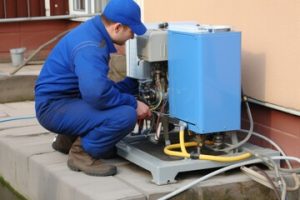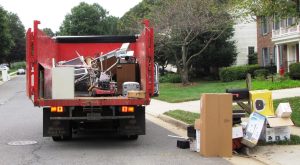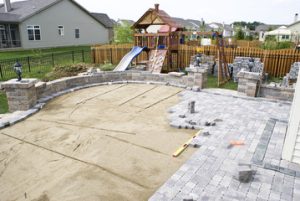Cabinet refinishing is a cost-friendly option that can revitalize wood cabinets. It can also transform drab-looking kitchens that are missing that final touch. However, this is a project that requires some planning and patience. To ensure the refinishing process goes smoothly, you must prepare your kitchen before hiring a cabinet painting company.
Clear Out and Clean

Cabinet Refinishing San Jose CA can be an effective way to revive old cabinets and give your kitchen a dramatic makeover without the cost and hassle of a full remodel. However, like any home improvement project, cabinet refinishing takes time and requires careful planning to ensure it’s done correctly. Rushing through the process to save time or cutting corners to cut costs can lead to subpar results that will be noticeable and potentially expensive to repair later on.
The first step in preparing your kitchen for a cabinet refinishing project is to clear out and clean the area. Begin by removing all decorative hardware, such as knobs and hinges, from the cabinets. Place them in a safe place so they’re easy to find when it’s time for reassembly. It’s also helpful to label the doors and drawers with their contents so you can reassemble them properly once the refinishing is complete.
Once the cabinets are empty, it’s important to carefully clean the surface to remove grease and dirt buildup. This will help the new paint or stain adhere better and last longer. Using a degreaser is recommended for best results, as it will effectively cut through the built-up grime. Then, lightly sand the surfaces to smooth them and create a clean, even surface for painting or staining.
Next, wipe down the cabinets with a damp cloth to remove any dust and debris. Be sure to pay special attention to the edges and corners where the cabinets meet the wall, ceiling, or floor. This is where brush marks tend to show up the most and can be difficult to cover with tape. Finally, prep the cabinets for painting by applying a coat of primer. This is especially important for bare wood cabinetry, as it will provide a clean foundation for the finish.
It’s also a good idea to apply a second coat of primer and allow it to dry completely before moving on to the final steps of your refinishing project. Once the primer is dry, you’ll be ready to paint or re-stain! When you’re finished, be sure to seal the finish to protect it from moisture and scratches.
Remove Appliances
While cabinet painting is less invasive than a complete kitchen remodel, it’s still important to prepare the area for your painters. Clearing out cabinets and removing appliances not only gives the team the space they need to work but also protects your belongings from dust and debris. If possible, move any movable furniture like bar stools and small tables to another room or at least out of the way. This step is especially important for ensuring there’s a clear, unobstructed path from the front door to the kitchen workspace. Additionally, it’s a good idea to remove any floor mats that may pose tripping hazards.
Before you begin preparing your appliances for removal, start by writing down a list of the items that you regularly keep out on the counter. This will help you narrow down which items can remain out all the time, such as your blender, toaster, and crockpot, from those that need to be put away each time you use them. It’s also a great way to make sure you don’t forget any items when removing them.
After making your list, start removing appliances from the kitchen and labeling them for easy reassembly later. Be sure to note where each item was removed from so that you can return it to the correct cabinet once refinishing is done. You can mark the cabinet doors using a pencil on the hinge holes or by writing a number in each corner of the door (as shown above).
CCFF Pro Tip: Once all the appliances are removed from the kitchen, take this opportunity to give them a thorough cleaning. Wash and scrub surfaces with synthetic steel wool and soapy water, and spray them with a multi-purpose cleaner such as trisodium phosphate (TSP). This product emulsifies grease so that it can be rinsed away more easily.
After cleaning and reorganizing your appliances, it’s time to start preparing the cabinet boxes for refacing. This process involves replacing cabinet doors, drawer fronts and hardware for a refreshed look without the cost of a full kitchen remodel. It’s a great choice for homeowners who want to upgrade their kitchen’s appearance but can’t afford the upheaval of a complete renovation.
Prepare a Temporary Kitchen
Cabinet refacing is a great option for homeowners looking to upgrade their kitchen without the expense and hassle of a complete renovation. Refacing involves removing the old cabinet doors and drawer fronts, cleaning and sanding the existing cabinet frames, and applying new veneer or laminate to the visible surfaces of the frame. New hardware is then installed and the finished product creates a like-new kitchen look in a fraction of the time it takes to complete a full kitchen remodel.
Regardless of the type of kitchen makeover you choose, it is essential to plan ahead for how you will manage your daily meals while the renovation is underway. The key to minimizing disruption is to create a temporary kitchen away from the renovation area where you can prepare food and eat meals. The dining room, basement, or garage (in warmer climates) are ideal locations that can easily be repurposed into a functional kitchen space. Choose a location that is out of the way of renovation noise and dust, and equip it with a microwave, mini fridge, hot plate, and toaster oven.
Storage solutions are also important in a temporary kitchen, so stock up on shelving units and plastic bins to keep your kitchen organized. Maximize vertical space by utilizing wall-mounted shelves to store items such as pots, pans, and cooking utensils. Also consider investing in stackable containers and racks to store bulk items such as rice, pasta, and beans. In addition, a portable pantry cart or shelving unit is a great way to store non-perishables and keep everything in one place.
Meal preparation will be a challenge while the cabinets are being refinished, so try to plan ahead by creating simple recipes that can be made with a single appliance or by batch cooking and then reheating meals throughout the week. Also, be sure to stock up on ready-to-eat foods like sandwiches, salads, and pre-cooked proteins that will help you avoid going out to eat or eating takeout during the renovation.
Schedule a Consultation
Cabinet refacing is an effective way to transform the look of your kitchen, without the hassle or cost of a complete renovation. It’s especially popular for homeowners looking to update the look of their kitchen without spending a fortune on brand-new custom cabinets.
Whether you’re tired of the dark stain on your wood cabinets, or your home has gone from farmhouse to modern, a professionally performed cabinet refinishing project will give your space the facelift it needs. But before you roll up your sleeves, make sure you’re prepared for the process. Here are a few dos and don’ts to keep in mind.
Do: Schedule a consultation. Before you get started, it’s important to schedule a consultation with your cabinet refacing company. This is a chance to discuss your design preferences and ask any questions you might have. During this time, your installer can also provide you with an estimate for the job. This will help to prevent any surprises down the road.
Don’t: Pick a new color that clashes with your existing kitchen. It’s easy to overlook how your cabinet color will look against the rest of your kitchen, but a visual clash can detract from the beauty and functionality of your space. It’s best to work with the professionals to create a color scheme that complements your existing kitchen and ensures consistency throughout your home.
If you’re ready to breathe new life into your kitchen, contact the experts at CCFF for a cabinet refacing consultation. We can provide you with custom cabinetry, refacing services, and more to create the kitchen of your dreams. Get in touch with us today to learn more about our services or to schedule your consultation! We proudly serve homeowners in the Metro-Atlanta area.


